Resources
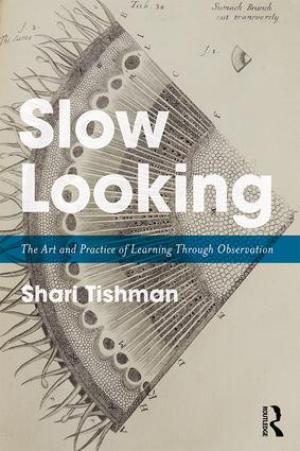
Click Here for Book Review Slow Looking provides a robust argument for the importance of slow looking in learning environments both general and specialized, formal and informal, and its connection to major concepts in teaching, learning, and knowledge. A museum-originated practice increasingly seen as holding wide educational benefits, slow looking contends that patient, immersive attention to content can produce active cognitive opportunities for meaning-making and critical thinking that may not be possible through high-speed means of information delivery. Addressing the multi-disciplinary applications of this purposeful behavioral practice, this book draws examples from the visual arts, literature, science, and everyday life, using original, real-world scenarios to illustrate the complexities and rewards of slow looking.
Video. Pedagogy & Theatre of the Oppressed, Inc. (PTO) supports people whose work challenges oppressive systems by promoting critical thinking and social justice through liberatory theatre and popular education. Our vision is to create global access to popular education pedagogy and liberatory theatre of the oppressed methods to support a world based on radical love and social justice in stead of oppression and violence.
In our ostensibly secular age, discussing the real-world contexts and impacts of religious traditions in the classroom can be difficult. Religious traditions may appear at different times to different students as too irrelevant, too personal, or too inflammatory to allow them to engage openly with the materials, the issues, and each other. In this “Design & Analysis” article Aaron Ricker describes an attempt to address this awkward pedagogical situation with an experiment in role-play enacted on the model of a mock conference. This description is followed by four short responses by authors who have experimented with this form of pedagogy themselves. In “Conplay,” students dramatize the wildly varying and often conflicting approaches to biblical tradition they have been reading about and discussing in class. They bring the believers, doubters, artists, and critics they have been studying into the room, to interact face-to-face with each other and the class. In Ricker's experience, this playful and collaborative event involves just the right amount of risk to allow high levels of engagement and retention, and it allows a wide range of voices to be heard in an immediate and very human register. Ricker finds Conplay to be very effective, and well worth any perceived risks when it comes to inviting students to take the reins.
The field of biblical studies lends itself well to decentered online learning – a kind that uses active learning to engage primary texts and their interpretations. Not only does such an approach work well in online and hybrid formats, it more readily welcomes readings that are more contextual, constructive, and collaborative. Three aspects best characterize a decentered approach to active learning online: an orientation toward primary texts, collaborative inquiry, and enhanced learner initiative. This essay describes the significance of each in turn, along with naming some best practices. I argue that this approach not only shifts focus toward learners and the learning environment, it works particularly well for teaching Bible courses online and in hybrid formats where interpretation of primary sources is the fundamental goal.
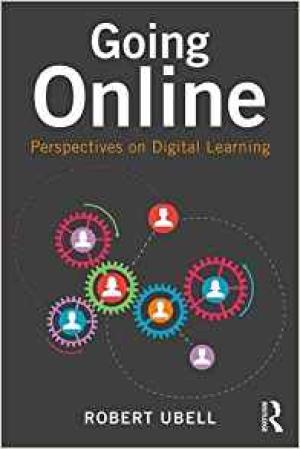
Click Here for Book Review In Going Online, one of our most respected online learning leaders offers insights into virtual education―what it is, how it works, where it came from, and where it may be headed. Robert Ubell reaches back to the days when distance learning was practiced by mail in correspondence schools and then leads us on a tour behind the screen, touching on a wide array of topics along the way, including what it takes to teach online and the virtual student experience. You’ll learn about: -how to build a sustainable online program; -how to create an active learning online course; -why so many faculty resist teaching online; -how virtual teamwork enhances digital instruction; -how to manage online course ownership; -how learning analytics improves online instruction. Ubell says that it is not technology alone, but rather unconventional pedagogies, supported by technological innovations, that truly activate today's classrooms. He argues that innovations introduced online―principally peer-to-peer and collaborative learning―offer significantly increased creative learning options across all age groups and educational sectors. This impressive collection, drawn from Ubell's decades of experience as a digital education pioneer, presents a powerful case for embracing online learning for its transformational potential.
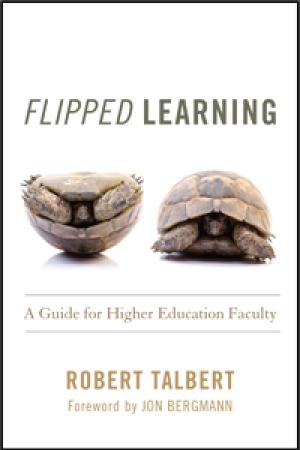
Click Here for Book Review Flipped learning is an approach to the design and instruction of classes through which, with appropriate guidance, students gain their first exposure to new concepts and material prior to class, thus freeing up time during class for the activities where students typically need the most help, such as applications of the basic material and engaging in deeper discussions and creative work with it. While flipped learning has generated a great deal of excitement, given the evidence demonstrating its potential to transform students’ learning, engagement and metacognitive skills, there has up to now been no comprehensive guide to using this teaching approach in higher education. Robert Talbert, who has close to a decade’s experience using flipped learning for majors in his discipline, in general education courses, in large and small sections, as well as online courses – and is a frequent workshop presenter and speaker on the topic – offers faculty a practical, step-by-step, “how-to” to this powerful teaching method. He addresses readers who want to explore this approach to teaching, those who have recently embarked on it, as well as experienced practitioners, balancing an account of research on flipped learning and its theoretical bases, with course design concepts to guide them set up courses to use flipped learning effectively, tips and case studies of actual classes across various disciplines, and practical considerations such as obtaining buy-in from students, and getting students to do the pre-class activities. This book is for anyone seeking ways to get students to better learn the content of their course, take more responsibility for their work, become more self-regulated as learners, work harder and smarter during class time, and engage positively with course material. As a teaching method, flipped learning becomes demonstrably more powerful when adopted across departments. It is an idea that offers the promise of transforming teaching in higher education. (From the Publisher)
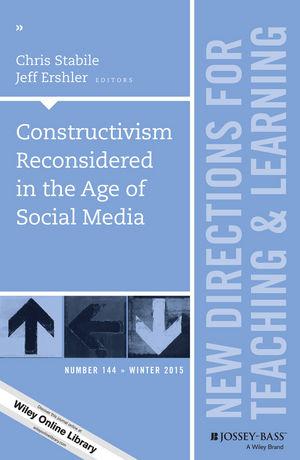
Click Here for Book Review No longer relegated to just the classroom, learning has become universal through the use of social media. Social media embodies constructivism itself as the users engage in the development of their own meaning. And, constructivism is relevant to education, and learning theory and technological advance can be better understood in the light of one another. This volume explores: - particular areas influenced by constructivist thinking and social media, such as student learning, faculty development, and pedagogical practices, - practical and useful ways to engage in social media, and - dialogue and discussions regarding the nature of learning in relation to the technology that has changed how both faculty and students experience their educational landscape. This is the 144th volume of this Jossey-Bass higher education series. It offers a comprehensive range of ideas and techniques for improving college teaching based on the experience of seasoned instructors and the latest findings of educational and psychological researchers. (From the Publisher)
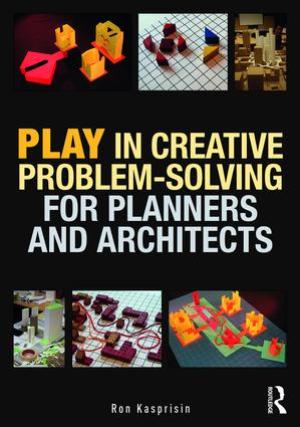
Click Here for Book Review In Play in Creative Problem-solving for Planners and Architects, "play" is defined, explored and demonstrated as a critical catalyst in creative problem-solving processes. The book defines the current psychological research into play and creative problem-solving, explores the necessary integration of the two, and exemplifies for students and practitioners the use of play in creative endeavors; and the role that play serves in separating linear from creative problem-solving approaches. Play is explored regarding its elements (tools, skills, environment), characteristics (a free activity without failure) and attitude as it relates to and activates the creative process with the focus on urban design, planning, architecture, and landscape architecture. The book re-establishes the whole mind-body thinking process of play as a means of object-learning; to provide designers and planners with alternative ways of design-thinking; and to challenge the over-utilization of digital technologies in creative processes. Creative problem-solving requires an appreciation for ambiguity, uncertainty of outcome, complexity that leads to the discovery of novelty and innovation. The book incorporates examples and exercises in play activities related to the design and planning fields, and exercises related to play-tools and skills for students and professionals. It also defines terms used in play and creativity psychology; provides examples and structure for play and creative problem-solving activities; describes the type and use of appropriate play-tools; contains an extensive bibliography on play and creative problem-solving texts; and provides significant illustrations making it fundamental reading for students and professionals in urban design and planning fields. (From the Publisher)
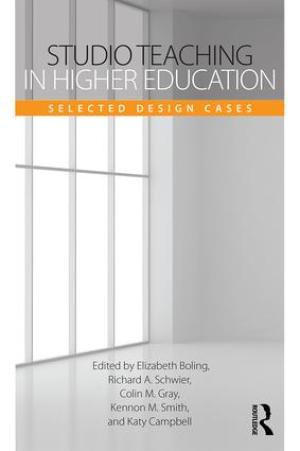
Click Here for Book Review Well-established in some fields and still emerging in others, the studio approach to design education is an increasingly attractive mode of teaching and learning, though its variety of definitions and its high demands can make this pedagogical form somewhat daunting. Studio Teaching in Higher Education provides narrative examples of studio education written by instructors who have engaged in it, both within and outside the instructional design field. These multidisciplinary design cases are enriched by the book’s coverage of the studio concept in design education, heterogeneity of studio, commonalities in practice, and existing and emergent concerns about studio pedagogy. Prefaced by notes on how the design cases were curated and key perspectives from which the reader might view them, Studio Teaching in Higher Education is a supportive, exploratory resource for those considering or actively adapting a studio mode of teaching and learning to their own disciplines. (From the Publisher)
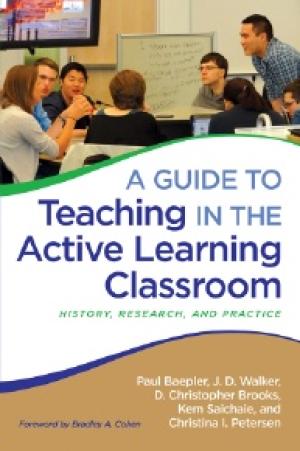
Click Here for Book Review Abstract: While Active Learning Classrooms, or ALCs, offer rich new environments for learning, they present many new challenges to faculty because, among other things, they eliminate the room’s central focal point and disrupt the conventional seating plan to which faculty and students have become accustomed. The importance of learning how to use these classrooms well and to capitalize on their special features is paramount. The potential they represent can be realized only when they facilitate improved learning outcomes and engage students in the learning process in a manner different from traditional classrooms and lecture halls. This book provides an introduction to ALCs, briefly covering their history and then synthesizing the research on these spaces to provide faculty with empirically based, practical guidance on how to use these unfamiliar spaces effectively. Among the questions this book addresses are: • How can instructors mitigate the apparent lack of a central focal point in the space? • What types of learning activities work well in the ALCs and take advantage of the affordances of the room? • How can teachers address familiar classroom-management challenges in these unfamiliar spaces? • If assessment and rapid feedback are critical in active learning, how do they work in a room filled with circular tables and no central focus point? • How do instructors balance group learning with the needs of the larger class? • How can students be held accountable when many will necessarily have their backs facing the instructor? • How can instructors evaluate the effectiveness of their teaching in these spaces? This book is intended for faculty preparing to teach in or already working in this new classroom environment; for administrators planning to create ALCs or experimenting with provisionally designed rooms; and for faculty developers helping teachers transition to using these new spaces. (From the Publisher)